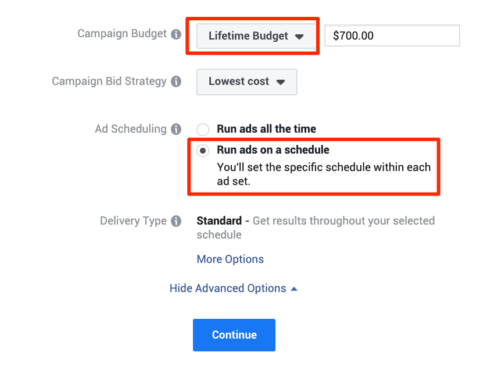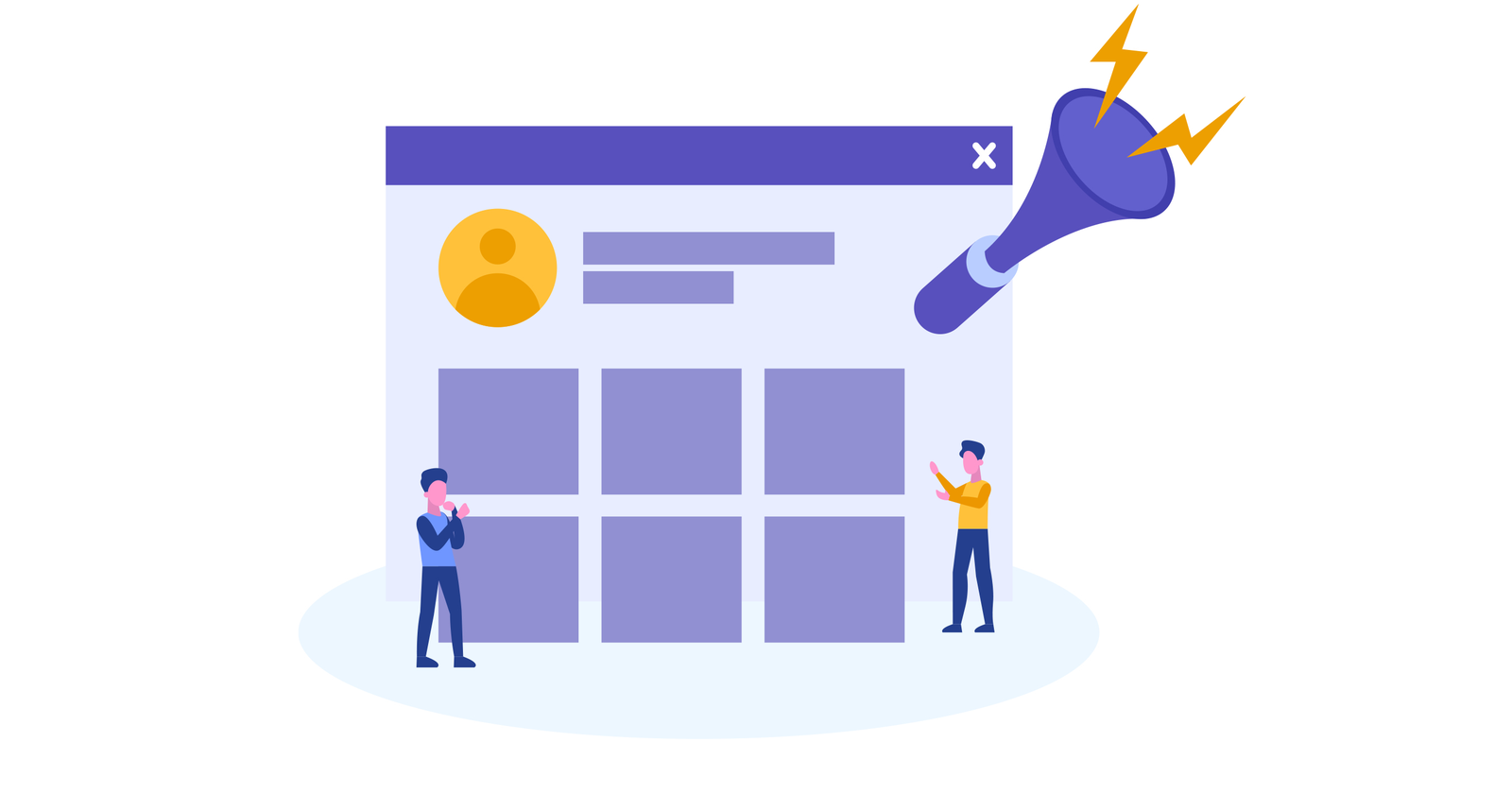As the world’s largest social network, Facebook can be a great way for marketers to reach their target audiences through ads.
With approximately 2.70 billion monthly active users, this is a digital channel worth targeting.
But how can you be sure you’re making the most of your precious budget if you’re new to Facebook advertising?
Here are some Facebook ads tips to get you started and help give you an edge on this popular platform.
3 Quick-Fire Answers To Common Facebook Ads Questions
First, let’s address a few of the greatest concerns and questions people have around Facebook advertising.
How Much Does Facebook Advertising Cost?
When it comes to the cost of a Facebook ad, it really depends.
Recent research by AdEspresso reveals that the primary factors that impact the cost of Facebook ads are:
- Timing: Time and day the Facebook ad shows.
- Bidding strategy: Lowest cost or a specific bid cap.
- Ad placement: Higher-competition placements cost more.
- Ad relevance: Low scores engagement ranking, quality ranking, or conversion ranking can increase the costs of the Facebook ad.
- Target audience: Higher competition audiences cost more with Facebook ad campaigns.
AdEspresso also calculated the average cost per click:
- Impressions: $0.98.
- Reach: $1.03.
- Lead generation: $0.67.
- Conversions: $0.25.
- Link clicks: $0.16.
How Does Facebook Advertising Work?
Facebook advertising is sorted by campaigns.
A new Facebook campaign can have one or several Facebook ads in it.
Facebook ads target users based on their location, demographic, and profile information.
The ad will then appear on the person’s screen as they scroll through their Facebook feed.
Views are recorded as impressions.
Likes and comments on Facebook ads are recorded as engagement.
Clicks – which can take the person to another website, an online store, or a Facebook page or offer, depending on the campaign objective – are recorded as clicks, cost per click, click-through rate, and more.
You can read How Facebook Ads Actually Work to learn more.
Are Facebook Ads Worth It?
Facebook ads are 100% worth it if you’re looking to get more visibility, generate more leads, and convert more customers.
Start By Setting Up Your Facebook Ads Manager Account
To start advertising on Facebook, you first need to set up your Facebook Ads Manager account.
- Log into Facebook.
- Select Menu and Ad from the drop-down menu in the top right corner.
- At the bottom, click on the Got to Ads Manager prompt at the bottom left corner.
Facebook Ads Manager will create an account for you and guide you through setting up your first ad campaign.
You can also create Facebook Ads and your new Facebook ad campaign through your Facebook Business Manager account by clicking the drop-down arrow in the upper-right corner of your Facebook page and selecting Ads Manager.
It’s Time To Create Your First Facebook Ads Campaign
Click on the + Create button in the Campaigns tab, and let’s jump into Facebook advertising!
Step 1: Identify Your Goal
First, decide what you want your Facebook ad campaigns to do. Do you need more website traffic?
Do you want to grow your email database through lead gen?
What do you want Facebook users to do with your Facebook ad?
Facebook Ads provides 11 objectives to support your overarching objective.
Choose one.
- Brand awareness: Make non-customers aware of your brand.
- Reach: Let your advert and message reach a wider scope of your target audience.
- Traffic: Direct clicks and visits to a specific website, mobile app, or Facebook Messenger chat.
- Engagement: Raise the volume of post engagements, Likes, Page follows, or event engagement.
- App installations: Increase downloads for your application.
- Video views: Get more views on your videos.
- Lead gen: Capture more potential customers and leads into your funnel.
- Conversations: Improve engagement with your business through Facebook Messenger.
- Conversions: Get the desired outcome or action (such as subscribe, download, etc.) on your landing page, web app, or Facebook Messenger.
- Product sales: Integrate Facebook ads with your product catalog so that people see ads for items they are more likely to buy.
- Store traffic: Direct more customers to your physical store.
Conversion-based objectives (like sales and installs) on your Facebook advertising campaigns will be charged per action, and exposure-based goals (like website visits and views) will be charged per impression.
Step 2: Set Your Budget And Schedule
-
 Image from Facebook, March 2022
Image from Facebook, March 2022
Enter the name of your Facebook ad campaign at the top of this screen.
This is just for your records. Set and choose the page to promote.
Set your budget by choosing a daily or lifetime budget, as well as the start and end dates.
You can schedule your ad to go live in the future or choose to publish it right away.
Facebook Ads Tip: Leverage Campaign Budget Optimization
Campaign Budget Optimization (CBO) is a feature provided by Facebook advertising that could be worth utilizing.
CBO allows you to determine your budget at a campaign level rather than the ad set stage.
Doing so will allow Facebook to optimize your budget across different ad sets within the campaign.
Why is this good?
The bulk of your budget will be spent on the target audience or audiences that bring better results.
This should result in more conversions and a lower cost per conversion.
Step 3: Select Your Audience
Scroll down a bit further to build your target audience.
Facebook Ads Tip: Use custom audiences.
Your first choice – and we think the best – is for a custom audience.
This might be alarming for a first-time Facebook Ads user, but here are the tips you need to win at Facebook Ads custom audiences.
Most businesses find their ideal customer by targeting people already familiar with their brand.
These include:
- Old and current customers.
- Website visitors.
- Facebook page followers.
- Etc.
Directing your Facebook ads to these warmer groups of people will get a better result than if you were targeting a cold audience base.
This is done through the creation of custom audiences.
We recommend starting with your customer file and website visitors.
However, if you cannot create a custom audience, use the audience builder provided by Facebook.
Choose your target location (city, country, etc.), age, gender, and language.
Detailed targeting in your Facebook ad campaign allows you to keep or remove an audience based on their demographics, what they are interested in, and their behaviors.
Use this to micro-focus, for example, selecting those interested in car and household insurance, but not life insurance.
You can also include or exclude those who follow your Facebook page or application or have attended or joined an online event for a warmer lead.
Tip: Make Use Of Facebook Lookalike Audiences
Facebook also provides lookalike audiences.
This type of audience replicates an existing audience to help you find people you have already identified as your ideal customer.
This means you can use your existing leads or customers (100 or more), upload this list to Facebook, and Facebook Ads can send your ads to people who are like your ideal customer.
Step 4: Select Where Your Facebook Ads Are Placed
Further down the page, you can identify where your Facebook ads will appear.
Facebook Ads Tip: Utilize Automatic Placements
By selecting this option, Facebook automatically places your advertisements across their platforms: Facebook, Instagram, Messenger, and the Audience Network.
They decide which platforms to deploy the ad on to get optimal results.
Step 5: Set Brand Safety And Bidding Strategy
Next, you can scroll down to the Brand Safety section.
You can choose to avoid sensitive content, and add specific blocklists such as specific websites, videos, and publishers.
Facebook Ads Tip: Choose The Lowest Cost Bid Strategy
Here is a Facebook Ads tip that is not widely known.
Facebook offers two Facebook ad bidding strategies:
- Lowest Cost: Facebook Ads defaults to this, so most Facebook campaigns use this strategy, and this is recommended.
- Target Cost: This could be the better bidding strategy for you if you want to grow an ad campaign or let it continue running for a while.
The potential reach and conversion estimates appear on the right side of the screen. These are just estimates and can be used as a guide.
Step 6: Create Your Facebook Ad
There are a bunch of ad formats to choose from.
Our tip is that you test out different Facebook ads to find out what works best for your audience.
- Newsfeed Ad: These show up in your newsfeed.
- Right Column Ad: Pretty basic ad, with a headline, description, and single image. Works on desktop.
- Lead Ads: Allows quick opt-in to newsletters and quotes directly from their mobile devices. Contact details auto-populate in the form fields.
- Carousel Ads: Also known as multi-product ads, allow you to showcase up to 10 images and links with each ad.
- Dynamic Product Ads (DPA): Remarketing ads that target users who had past actions or inactions on your site are timed to perfection.
- Page Post Links: Ideal for promoting your external website. Describe your offer with a large feature image, post text, and link description.
- Canvas Ads: Mobile-optimized option; these ads are an animated storytelling ad type.
- Event Ads: Ideal for a specific event.
- Offer Ads: Best to increase redemption rates.
- Mobile App Install Ads: Promote your app install on mobile and connect your Apple App Store or Google Play account.
- Desktop App Install Ads: The desktop Facebook app version of Mobile App Install Ads.
- GIF Ads: These are like a standard newsfeed ad, but with the GIF creativity included.
6 Slick Tips On How To Get Creative With Facebook Ads
It starts with a captivating headline.
Your headline impacts the click-through rate (CTR) and the cost-per-click (CPC).
A recent study revealed that 59% of people do not read more than the headline of a Facebook share before commenting and sharing.
Thankfully, Facebook Ads allows us to carry out multiple A/B tests to discover which headline people respond to!
Here’s how to write a great headline.
Keep Your Headline Short
A recent study found that headlines with 60-100 characters get the highest click-through rates.
Your headline needs to be short and catchy.
Use Emotive Words
Use your power words in your headline.
Words like:
- Instant.
- Free.
- Right now.
- Startling.
- Reveal.
- You.
Here’s Buffer’s list of 898 power words if you need more.
Use Numbers
You can also use numbers. People prefer to click on an ad with a headline that starts with a number.
Consider including these numbers in your Facebook ads:
- Value of the discount.
- Length of the free trial period.
- Number of customers.
Create A Sense Of Urgency
Scarcity and urgency inspire consumers to take action.
Ensure your ad has some kind of deadline, limitation, or cut-off.
Use Clear Calls-To-Action And Your “Doing Words”
Where is the best place for your call to action or verb?
Right there in your ad’s headline.
Include words like ‘get, download, start.’
Be specific and relevant, e.g., “Start learning today” or “Get your free trial.”
Avoid Stock Images And Use Videos Where You Can
Real photos perform better than stock photos, with nearly 35% of website visitors more likely to sign up when they see the real image.
Facebook video ads increase clicks and lower CPC and are just as easy to create as regular image ads.
To create a Facebook video ad, go to Facebook Ads Manager, create a new campaign, and upload a video.
Now You’re Ready To Track And Optimize Facebook Ads Performance
The Facebook Ads Manager dashboard lets you track your campaigns closely.
This ensures you invest in an ad that’s performing well rather than a campaign that isn’t.
Add the Facebook Pixel to your website landing page to track how your ads perform.
In the beginning, you may want to run a few ads with small audiences and budgets.
From this, you will better understand which is the best performing ad that can become the primary campaign once you have determined what works best.
So, now you have what you need to get started on Facebook Ads.
No matter what level of Facebook ad expertise you demonstrate, you now have the tips and tricks necessary to get your product in front of the customers you are most interested in reaching.
More resources:
- 12 Facebook Ads Features Every Marketer Should Know
- 5 Creative Ways To Use The Facebook Ad Library To Your Advantage
- Social Media Marketing: A Complete Strategy Guide
Featured Image: Fonstra/Shutterstock





